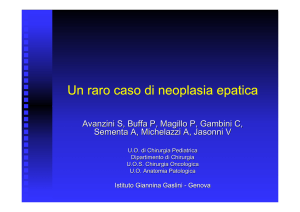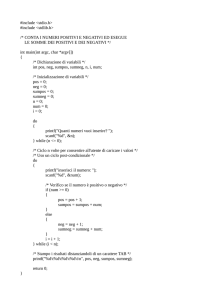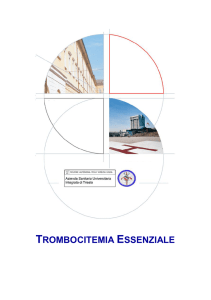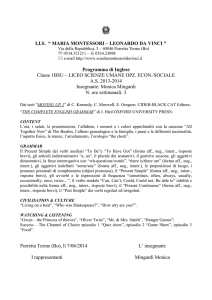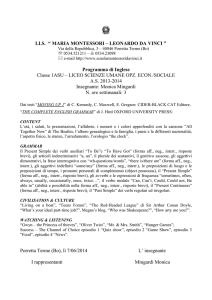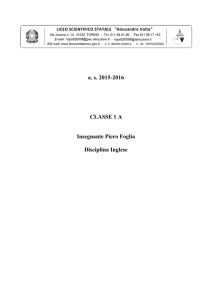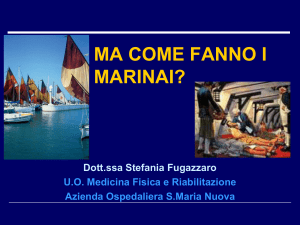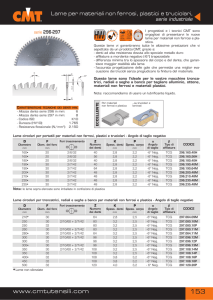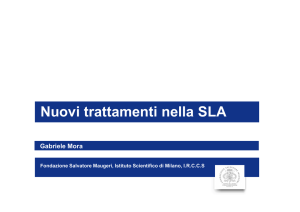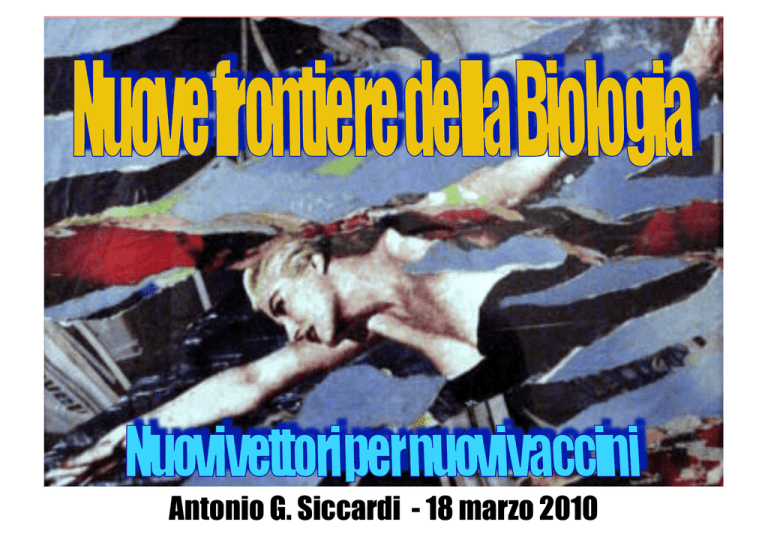
Antonio Siccardi 2004, Swimming Anita
Antonio
G. Siccardi - 18 marzo 2010
Edward Jenner, 1798, An Inquiry into the Causes and Effects
of the Variolae Vaccinae, a Disease Known by the Name of Cow Pox
La Vaccinazione di Jenner non era che una forma meno pericolosa della Variolazione (che poteva
causare il vaiolo in alcuni pazienti), ma il vignettista satirico ne proponeva una interpretazione
letterale (crescite di protuberanze con sembianze bovine nei soggetti vaccinati)
The wonderful effects of the new inoculation! Publications of the Anti-Vaccine Society
published June 12, 1802 by H. Humphrey, St. James's Street.
2009: niente di nuovo sotto il sole!
La “società anti-vaccino è più agguerrita che mai
“suinazione”
Comunque, …
1796-1979
Eradicazione del vaiolo
L’unica malattia umana che sia mai stata eradicata!
Solo 4 Poxvirus infettano l’uomo:
Variola (>>>Vaiolo)
Cowpox
Vaccini anti-vaiolo
Vaccinia
Monkeypox
350 nm
Come unico virus attenuato che abbia
eradicato una malattia umana, il virus vaccinia
è il miglior candidato di vettore biotecnologico
per nuovi vaccini ricombinanti che inducano
immunità contro qualunque immunogeno (e.g.
virale o tumorale) espresso da un transgene
ingegnerizzato nel genoma del vettore
transgene
ds DNA lineare ca. 200 kb
(estremità ripetitive, richiuse ad anello)
270 nm
< Troppo virus
< Limiting dilution
< No No
virus
virus
Il virus Vaccinia è facile da maneggiare
(in colture cellulari)
L’inserimento (distruttivo) nel gene TK
causa il fenotipo TK- (resistenza al BUdR).
gene TK attivo
vaccinia
sequenze di TK
plasmide
transgene
con promotore di vaccinia
vaccinia
gene TK inattivato
Vaccinia virus was introduced as a vector
for transient gene expression
in mammalian cells in 1982
(Mackett, 1982; Panicali and Paoletti,
1982)
• Wide host range
• High level expression of the transgene
• The expression does not require nuclear processing
and RNA transport
• “Appropriate” transport, secretion, processing
and post-translational modifications (N-, O-glycosilation,
phosphorylation, myristilation, cleavage, assembly)
• Protection afforded by immunization can be correlated
with neutralizing antibodies and/or induction of CTLs
Complications / Adverse Reactions
From Traditional Smallpox Vaccine
Inadvertent Inoculation
Generalized Vaccinia
Eczema Vaccinatum
Progressive Vaccinia
Erythema Multiforme
MVA
Modified Vaccinia Virus Ankara
(Anton Mayer, Monaco)
Più di 500 passaggi su fibroblasti di embrione di pollo.
Sei delezioni maggiori (208>>>177 kBp).
Non replica più su cellule di mammifero
(ad eccezione delle cellule BHK-21).
(Il gene K1-L permette la crescita anche su RK-13)
Complications / Adverse Reactions
MVA
None!
Argomenti del Seminario di oggi:
• Nuovi metodi per produrre Poxvirus
ricombinanti
• Prospettive di un vaccino ricombinante
“universale” contro l’influenza
The “poxvirus vector” team in Milano,
San Raffaele Scientific Institute.
Maddalena Panigada
Elisa Soprana
Giulia Di Lullo
Luisa Vigevani
Alessio Palini
100 nm
(Modified vaccinia virus Ankara and Fowlpox Virus)
are poxviruses widely employed as experimental
and human live vaccine vectors for their:
1. lack of replication in mammalian cells
2. high expression of heterologous genes
• MVA and FPV are not cross-reactive, therefore
recombinants expressing the same immunogen
can be used in sequence (prime/boost strategies).
(DNA/AAV)
MVA
FPV
IR/Protection
Recombinant selection is performed by introducing the transgene within a cassette
that contains VV-gene K1L, which allows growth in cell line RK-13.
Red-to-green gene swapping is functional for screening green recombinants
which did not carry-over red parental virus
J Virol Methods. 2009; 156:37-43. PMID: 19038289
Recombinant selection is performed by FACS
Red-to-green gene swapping is functional for both selecting
and screening green recombinants that do not carry-over red parental virus
J Virol Methods. 2009 Sep 22. [Epub ahead of print] PMID: 19778556
Infection / Transfection
ca. 1:1000
CEF monolayer
I/T lysate
MVA-Red
Single-cycle infection
sP flank 2
flank 1
HcRed1-1
Z
Z
P
egfp
TG
P7.5
Tranfer Plasmid-Green
Single cell
sorting
rMVA production
in SF-CEF cultures
CEF monolayer
BHK-21 + I/T lysate (1:100)
single green cells
sorted onto monolayers
i.e. the green
cells are covered
with “red” virions
single green cells
sorted onto monolayers
+IMCBH
The inhibitor of Golgi wrapping IMCBH allows to sort
individually infected cells with no carry-over of newly
shed viruses
IMCBH (Schmutz et al., 1991)
(N1-isonicotinoyl-N2-3-methyl-4-chlorobenzoylhydrazine)
Reversible Inhibitors
of Vaccinia Virus release
IMCBH
Cytochalasin D
1. 2. 3. 4. Infection /transfection in CEF
Collect lysate
Infect CEF
Flow analysis at 8, 24, 48 h
HA/Green
Red/HA
Green/HA
A
EGFP
TG
Z
B
Z
3rd Recombination in Z
A
TG
Z
B
Terminal Dilution cloning of marker-free segregants
Staining
Typhoon Fluoroimaging
rMVA and rFPV
expressing the same transgene
allow to perform prime/boost
(or DNA prime/MVA boost/FPV
boost) vaccination regimens,
avoiding the problem of
neutralizing antiviral responses
Parallel production of rMVA and rFPV
HcRed1-1
HcRed1-1
sP
Construction of the
“acceptor” viral vector
sP
MVA
flank 1
MVA
flank 2
pMVA Transfer Plasmid
HcRed1-1
MVA
flank 1
MVA
flank 2
pFPV Transfer Plasmid
FPV
FP flank 1
which contains
the two MVA homology regions
flanking the red reporter gene
FP flank 2
HcRed1-1
MVA
flank 1
FPV RED/DUAL
sP
MVA
flank 2
I/T
FACS sorting
FPV
RED/DUAL
HcRed1-1
FP flank 1
FP flank 2
sP
MVA
flank 1
MVA
flank 2
MVA Transfer Plasmid
With TG-Green Cassette
FPV
RED/DUAL
FP flank 1
FP flank 2
TRANSGENE
MVA
flank 1
The Virus FPV RED/DUAL
is used as acceptor of
MVA Transfer Plasmid-Green Cassettes
MVA
flank 2
Soprana
rFPV
FPV-RED-DUAL
rMVA
sP flank 2
flank 1
MVA-RED
HcRed1-1
Z
HcRed1-1
Z
Z
P
egfp
sP flank 2
flank 1
TG
Z
P
P7.5
Tranfer Plasmid-Green
egfp
TG
P7.5
Tranfer Plasmid-Green
The same transfer construct is used
to produce “parallel” rMVA and rFPV
Infection / Transfection
Sorting
FACS
Cloning
Terminal
Dilution
Imaging
Typhoon
Construction of recombinant poxviruses
expressing Avian Influenza immunogens
orthomyxovirus
poxvirus
A possible advantage of poxvirus vs. influenza vaccines
Influenza vaccine yields (H5N1 & H1N1)* : about 1.4 doses per egg.
rMVA vaccines are also produced from egg-derived CEF.
**Virus yields on SF-CEF range around 5x1010 pfu/egg.
***Vaccination doses range around 5x107 pfu/dose.
rMVA Vaccine yields: about 103 doses per egg.
________________________________________________
*Dr. Robin Robinson, director of HHS's Biomedical Advanced
Research and Development Authority (BARDA)
**Our own (conservative) estimates.
***Combination Study With MVA BN and Dryvax (Bavarian Nordic)
Influenza Vaccines
Aiming at a “universal vaccine”
Collaborations:
Reinhard Kurth, Steve Norley, Isaac Sipo, Mathias Knauf.
Robert Koch Institut, Berlin
Targets: NP, M1, M2 (conserved antigens).
-Ilaria Capua, Maria Serena Beato, Adelaide Milani.
Istituto Zooprofilattico 3 Venezie, Legnaro, Padova
-Elisa Vicenzi, Anna Kajaste. Dibit, Milano
-Antonio Lanzavecchia, Davide Corti. IRB, Bellinzona
Targets: HA (conserved epitopes).
M1-V5 (267Aa, 29kDa) = MSLLTEVETYVLSIIPSGPLKAEIAQKLEDVFAGKNTDLEALMEWLKTRP
ILSPLTKGILGFVFTLTVPSERGLQRRRFVQNALNGNGDPNNMDRAVKLY
KKLKREITFHGAKEVALSYSTGALASCMGLIYNRMGTVTTEVAFGLVCAT
CEQIADSQHRSHRQMATITNPLIRHENRMVLASTTAKAMEQMAGSSEQAA
EAMEIANQARQMVQAMRTIGTHPNSSAGLRDNLLENLQAYQKRMGVQMQR
FKMDDLGSIPNPLLGLD
M2-V5 (112Aa, 13kDa) = MSLLTEVETPTRNEWECRCSDSSDPIVVAANIIGILHLILWILDRLFFKC
IYRRLKYGLKRGPATAGVPESMREEYRQEQQSAVDVDDGHFVNIELEMDD
LGSIPNPLLGLD
NP
NP-V5 (513Aa, 58kDa) =
MASQGTKRSYEQMETGGERQNATEIRASVGRMVSGIGRFYIQMCTELKLS
DYEGRLIQNSITIERMVLSAFDERRNRYLEEHPSAGKDPKKTGGPIYRRR
DGKWVRELILYDKEEIRRIWRQANNGEDATAGLTHLMIWHSNLNDATYQR
TRALVRTGMDPRMCSLMQGSTLPRRSGAAGAAVKGVGTMVMELIRMIKRG
INDRNFWRGENGRRTRIAYERMCNILKGKFQTAAQRAMMDQVRESRNPGN
AEIEDLIFLARSALILRGSVAHKSCLPACVYGLAVASGYDFEREGYSLVG
IDPFRLLQNSQVFSLIRPNENPAHKSQLVWMACHSAAFEDLRVSSFIRGT
RVVPRGQLSTRGVQIASNENMEAMDSNTLELRSRYWAIRTRSGGNTNQQR
ASAGQISVQPTFSVQRNLPFERATIMAAFTGNTEGRTSDMRTEIIRMMES
ARPEDVSFQGRGVFELSDEKATNPIVPSFDMNNEGSYFFGDNAEEYDNMD
DLGSIPNPLLGLD
IPA & WB analysis
(anti-V5 mAb-HRP)
rMVA-M2
rMVA-NP
NP
M1
45
220
31
97
21
14
29 kDa
66
45
58 kDa
Pandemic strain A/H1N1/09 (swine)
Obtained: coHA, coM1, coNP sequences from RKI
Constructed: rMVA-coHA, rMVA-coM1, rMVA-coNP
-
+
coH1
A2-7
-
+
coNP
2B
-
- 98
- 64
- 50
- 36
+
coM1
6-5
--
64
50
36
22
16
- 22
WB anti H1N1
Primary Ab: Chicken anti-H1N1 antiserum
Secundary Ab: HRP-rabbit anti-chicken Ig
Soprana & Panigada
Prime/boost vaccination regimens
rDNA (or rAAV) /rMVA
rMVA /rFPV
rDNA (or rAAV) /rMVA /rFPV
for transgenes M1, M2, NP,
are tested at RKI, Berlin
Preliminary results indicate NP
as the best immunogen (in rDNA format),
M1 is also a good immunogen (in rAAV format)
HA-Adelaide has been derived from an
H5N1 isolate from a migrant swan dead in
HPAIV A/cygnus Sicily
olor/Italy/724/2005
HA-Cygnus vs.HA-Vietnam
Loop 130
Helix 190
Loop 220
MVA-HA Cygnus
HA expression
IPP foci on BHK-21
Primary CEF were infected O/N
with MVA-HA, or MVA-RED.
Trypsinized, mixed with ChRBC,
spun into a pellet, resuspended
and spun through Histopaque.
The red pellets from MVA-HA
infected CEF contained rosettes
CEF + MVA-HA (20)
HA is expressed on the
surface of infected cells in a
functional form and binds to
sialic acid on the surface of
ChRBC forming ROSETTES
CEF + MVA-HA (10)
CEF + MVA-RED
MVA Vaccination/Homologous Challenge Experiment
rMVA vaccination of chicken
dose: 1e8 pfu sc (single shot)
Survival:
vaccinated
controls
10/11
0/10
!!!!!
Chicken vaccinated with rMVA-H5
and challenged with 1e5 EID50 of HPAIV A/cygnus olor/Italy/724/2005
PCR cycles: neg>35
Day Post Infection
Chicken N°
31
32
33
34
35
36
37
38
39
40
SN
41
CS: cloacal swab
TS: tracheal swab
Neg: Negative
3
CS
Neg
Neg
Neg
Neg
Neg
Neg
Neg
Neg
Neg
Neg
Neg
5
TS
34.1
29.6
29.7
34.6
Neg
Neg
30.2
32
33.7
34.1
31.6
CS
Neg
Neg
Dead
Neg
Neg
Neg
Neg
Neg
Neg
34
Neg
7
TS
34
30.6
Dead
34.2
34.7
Neg
Neg
Neg
Neg
Neg
32.1
CS
32.9
Neg
Dead
Neg
Neg
Neg
Neg
Neg
Neg
22.0
Neg
10
TS
Neg
34.7
Dead
Neg
Neg
34.6
Neg
34.9
Neg
Neg
34.8
CS
Neg
Neg
Dead
Neg
Neg
Neg
Neg
32
34.6
Neg
Neg
TS
Neg
Neg
Dead
Neg
Neg
Neg
Neg
Neg
Neg
Neg
Neg
All the animals were infected, but only one died:
virus was found and subsequently cleared
in trachea and cloaca
Haemagglutination inhibition assay (HI)
The HI titer
shoots up
after infection
Conventional flu vaccines reach HI = 7 pre-challenge
MVA Vaccination/Heterologous Challenge Experiment
0 bleed
1st bleed
1st immunisation
2nd bleed
and transfer
to L3
2nd immunisation
Immunisaton with 107 pfu:
MVA-HA-Cygnus
MVA-NP-VN
MVA-M1-VN
MVA-M2-VN
Mix of all 4 antigens
Controls:
MVA empty vector
Mock (PBS)
H5N1 challenge (10 LD50)
A/VN1203
Immunisation:
twice at 0 and 3 weeks
Blood sample:
before and after immunisation
Weighing and observation: 14 d
Experiment performed by Ilia Semmler, RKI, P15
110
105
100
95
90
85
80
Empty Vector
MVA-HA
MVA-NP
MVA-M1
MVA-M2
MVA-HA,NP,M1,M2
75
Weight (%)
105
100
95
90
85
80
75
0 1 2 3 4 5 6 7 8 9 10 11 12 13 14 15
0 1 2 3 4 5 6 7 8 9 10 11 12 13 14
105
100
Weight kinetics
for 14 d after challenge
95
90
85
80
PBS
75
0 1 2 3 4 5 6 7 8 9 10 11 12 13 14 15
Days post challenge
3d post challenge, 1-2 mice/group were sacrificed
for viral load measurement in lungs
105
104
Immunogen
Mock/PBS
MVA-mix
MVA-mix
MVA-M2
MVA-M1
MVA-NP
MVA-NP
MVA-HA
102
MVA-HA
103
Empty Vector
Viral Load (Pfu/g Lung)
106
Heterologous protection implies
that Abs are made against
neutralizable heterosubtypic epitopes
(outside the globular head)
Headless
Haemagglutinin
Mab C179 >>
Sagawa H et al.The immunological activity of a deletion mutant of influenza virus
haemagglutinin lacking the globular region. J Gen Virol. 77:1483-7, 1996.
Effect of vaccination with CV-1 cells transformed with pENH2dHO1 (=headless HA),
against heterologous challenge with A/FM/1/47 (H1 N1), in mice.
Heterologous challenge
headless HA
protection
heath-treated
headless HA
wt HA
no protection
Sagawa H et al.The immunological activity of a deletion mutant of influenza virus
haemagglutinin lacking the globular region. J Gen Virol. 77:1483-7, 1996.
Heterosubtypic Human Monoclonal antibodies do exist!
rMVA-HA (H1swine & H5 swan) display cross-reactive epitopes on the surface of infected cells
NC
SC-H5
FLD194
Key
Key
Key
Key
Key
Name
27.11.09.007
Gate
G1
G1
27.11.09.014
FL1-H
G1
27.11.09.017
FL1-H
G1
27.11.09.024
FL1-H
G1
27.11.09.027
27.11.09.031
FL1-H
G1
27.11.09.034
FL1-H
G1
27.11.09.037
Name
27.11.09.002
Parameter
FL2-H
Gate
G1
Name
27.11.09.005
Parameter
FL1-H
Gate
G1
27.11.09.015
FL1-H
G1
27.11.09.012
FL2-H
G1
27.11.09.025
FL1-H
G1
27.11.09.022
FL2-H
G1
27.11.09.035
FL1-H
G1
27.11.09.032
FL2-H
G1
Name
Name
27.11.09.003
27.11.09.010
Parameter
Parameter
FL1-H
FL1-H
Gate
Gate
G1G1
27.11.09.013
27.11.09.020
FL1-H
FL1-H
G1G1
27.11.09.023
FL1-H
G1
27.11.09.033
FL1-H
G1
Gate
G1
27.11.09.011
FL1-H
27.11.09.021
27.11.09.040
FL1-H
FL1-H
FG20
FLA3
G1
G1
Key
FE17
Parameter
FL1-H
Parameter
FL1-H
27.11.09.030
CEF uninfected
CEF-MVA-H5
CEF-MVA-H1
CEF-MVA-IgE
FE43
Name
27.11.09.004
Name
27.11.09.001
Key
Key
Name
27.11.09.006
Parameter
FL1-H
Gate
G1
27.11.09.016
FL1-H
G1
27.11.09.026
FL1-H
G1
27.11.09.036
FL1-H
G1
FB179
Key
27.11.09.018
27.11.09.028
27.11.09.038
FB118
Key
globular head H5
globular head H5
globular head H1 H5
stalk
H1 H5 H6 H9
stalk
H1 H5
stalk
H1 H2 H5 H9
stalk
H1 H5 H9
Name
27.11.09.009
27.11.09.019
27.11.09.029
27.11.09.039
HUMABS (Lanzavecchia et al.)
FLA3
FLD194
FE17
FE43
FG20
FB179
FB118
Name
27.11.09.008
H5 survivors
Vaccinees
Soprana
Prospettive di ottenere vaccini
ricombinanti “universali” contro
l’influenza A (stagionale e pandemica)
1. Nel repertorio umano esistono anticorpi neutralizzanti
diretti contro parti costanti dell’emagglutinina (poco
rappresentati nella risposta, dominata da anticorpi
contro la parte globulare variabile.
2. Emagglutinine ricombinanti “headless” inducono risposte
neutralizzanti e cross-reattive, mentre emagglutinine
“complete” inducono solo risposte contro la parte
globulare variabile.
3. Emagglutinine espresse da Poxvirus ricombinanti
inducono immunità protettiva nei confronti della
influenza A in modelli animali.
www.antoniosiccardi.net
Antonio Siccardi, 2009 Dance for all (Berlin)

